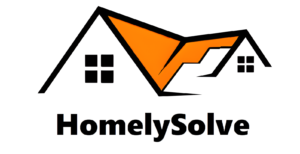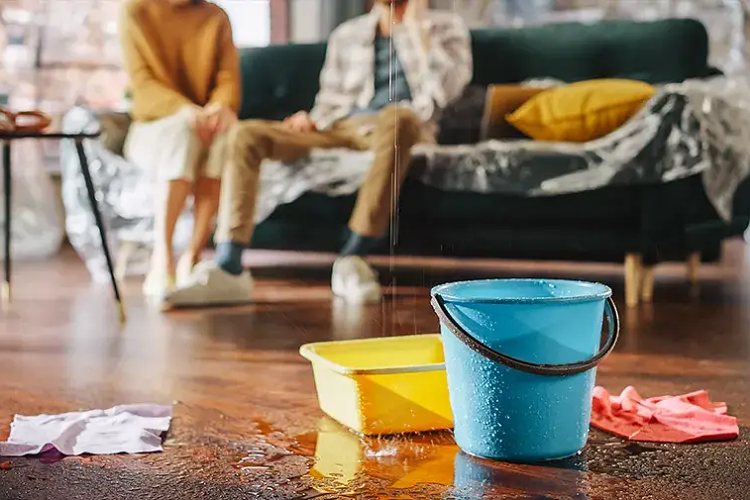You’ve just stepped onto soggy carpet, hearing that squish, and suddenly the scope of the cleanup feels overwhelming. Take a breath; you’re not alone, and there’s a logical path forward.
From shutting off the main valve to drying hidden cavities, each move you make now matters. For a refresher on the science behind extraction, drying, and sanitation, you can skim the guide at CivilDigital before rolling up your sleeves.
Reenter Home Safely
Standing on the curb, adrenaline racing, pausing before crossing the threshold protects health and evidence. Follow a structured entry routine so surprises and secondary injuries never steal momentum.
Scan Exterior First
Circle the building slowly, noting sagging roofs, loose power lines, broken gas meters, or displaced wildlife. A quick phone call to utilities beats heroic blunders every time.
Check Structural Clues
Doors that jam, windows that crackle, or brickwork that bulges signal hidden shifts. When in doubt, request a professional engineer and wait for an all-clear authorization.
Test Utilities Cautiously
Use a non-contact voltage tester before touching panels. Turn the main breaker off, then twist water and gas valves shut. Safe utilities create a controllable indoor environment.
Ventilate Immediately
Prop open opposite windows and place a battery fan at one end. Cross-ventilation dilutes harmful gases and lowers humidity, granting precious minutes to gather observations calmly.
Wear Protective Gear
Selecting personal protective equipment (PPE) tailored to flood conditions shields skin, lungs, and eyes while boosting confidence. Assemble the kit in advance, storing everything in a bright, waterproof bin.
- Hard hat first. Falling plaster, ceiling fans, or attic lumber can surprise anyone. A certified helmet prevents life-altering head injuries in unstable rooms.
- Shatter-resistant eyewear. Goggles with side shields block dusty drywall, mold spores, and chemical splash during demolition, scrubbing, and disinfecting phases.
- Nitrile or cut-resistant gloves. Alternate glove types as tasks change; switch instantly if punctured so contaminants never reach broken skin.
- Respiratory protection. An N95 blocks most spores; step up to a half-face respirator with P100 cartridges when bleach, sewage, or smoke residues appear.
- Non-slip, steel-toe boots. Traction keeps balance on slick subfloors, while composite shanks guard against hidden nails, glass, and errant screws.
Label each item with permanent marker, track replacements on a whiteboard, and decontaminate gear outdoors so microbes never hitchhike into uncontaminated zones.
Halt Ongoing Leaks
Stopping additional water flow limits costs dramatically; mitigation beats remediation every single hour it happens sooner. Treat leak control as a race against capillary action and mold spores.
Cut the Water Supply
Locate the main shut-off, usually basement or curbside. Turn clockwise with a meter key, then open low faucets to drain lines, reducing hidden ceiling and wall reservoirs.
Stabilize Roofing and Windows
Tarp missing shingles, board broken panes, and sandbag window wells. Fast exterior steps lower interior humidity and buy time for professional repairs.
Isolate Appliances
Unplug dishwashers, washers, and water heaters. Drain their tanks when safe. Appliance seals often conceal slow leaks able to restart damage after initial drying.
Monitor with Moisture Meters
Pin-type meters reveal wet spots behind paint. Mark readings on painter’s tape so progress tracking stays visual for homeowners, contractors, and insurance adjusters alike.
Preserve Valuables Quickly
Even during chaos, methodical triage of keepsakes prevents heartbreaking losses. Work top-down, light-to-heavy, grabbing irreplaceable memories before bulky furniture or drywall demands full attention.
- Start with documents. Birth certificates, wills, and passports slide into zipper bags, then a portable, waterproof safe or sealed plastic tote for rapid evacuation.
- Prioritize digital backups. Slip external drives and laptops into dry sacks; upload photos to cloud storage as soon as cell service returns for duplicate security.
- Elevate electronics. Place televisions, speakers, and gaming consoles onto sturdy tables away from damp carpet. Disconnect batteries from cameras to avoid corrosion.
- Wrap heirlooms. Use bubble wrap and contractor trash bags around photo albums, jewelry boxes, or vintage textiles; label contents so unpacking later remains orderly.
- Move lighter furniture upstairs. Stack chairs seat-to-seat, slide plastic under legs, and drape everything in polyethylene sheeting to block splash and airborne mist.
Snap quick photographs of each packed item and its pre-flood location; digital evidence accompanies insurance inventories and speeds sentimental restoration projects later.
Document Losses Thoroughly
Accurate documentation unlocks fair settlements. Think like a journalist—time, location, description, and visual proof—so claims adjusters trust every figure on the spreadsheet.
Create a Master Spreadsheet
Categorize rooms, list items, note brands, estimated age, and replacement cost. Color-code severity so priorities leap out during hectic phone calls with adjusters.
Shoot High-Resolution Media
Record a narrated walk-through, then capture still photos at multiple angles. Backup files to cloud and external drive; redundancy prevents accidental deletion disasters.
Preserve Physical Evidence
Pile ruined drywall, carpets, or appliances outside but under a tarp. Adjusters often want to inspect large losses before disposal authorizations are issued.
Save All Receipts
Keep envelopes for pump rentals, cleaning supplies, and hotel stays. Staple printouts to spreadsheet tabs, creating one unified packet that insurance reviewers appreciate.
Notify Insurance Promptly
A swift phone call starts the timer on coverage obligations, inspection scheduling, and potential temporary housing benefits. Delays risk policy violations and costly denial letters.
- Locate policy numbers. Store a digital copy in cloud email so paperwork lives even if file cabinets saturate during floods.
- Describe damages succinctly. Stick to facts—water source, timeline, affected rooms—so call logs reflect clear, consistent information.
- Request next-step instructions. Ask about approved vendors, photo requirements, and claim filing portals to avoid repeating tasks later.
- Record every conversation. Log date, representative name, and summary. Simple spreadsheets prevent miscommunication and strengthen appeal options.
- Confirm coverage triggers. Verify deductible amounts, exclusions, and additional living expense limits before contractors mobilize, ensuring budget alignment.
Follow up with email summaries, attaching initial photos, because written confirmation safeguards memories that might blur amid simultaneous restoration decisions.
Begin Emergency Drying
Drying starts while documentation continues. Water left longer than forty-eight hours invites mold colonization, so extraction and airflow teams operate like medical first responders.
Extract Standing Water
Deploy submersible pumps and wet vacuums until puddles vanish. Each gallon removed mechanically saves hours of subsequent evaporation, cutting dehumidifier runtimes dramatically.
Deploy Strategic Air Movers
Angle fans at forty-five degrees toward walls, creating circular airflow. Lift baseboards slightly so trapped moisture enters the airstream and heads for dehumidifiers.
Set Up Industrial Dehumidifiers
Desiccant or refrigerant units run continuously, draining into tubs or sump pumps. Measure humidity twice daily, aiming for forty-five percent before reconstruction begins.
Track Progress Methodically
Daily moisture logs document improvement. Insurers often accept SERVPRO or IICRC forms, especially when paired with digital hygrometer screenshots for undeniable authenticity.
Deep Clean Surfaces
Once dry, contaminants remain. Deep cleaning removes pathogens and odors, creating a healthy baseline for paint, flooring, and eventual family return.
Select Appropriate Disinfectants
Choose EPA-registered antimicrobials suited for Category 2 or 3 water events. Always observe contact times, wiping only after solutions dwell long enough to neutralize organisms.
Tackle Porous Materials
Shampoo carpets with hot-water extraction or discard if sewage is present. Scrub subfloors with trisodium phosphate, then rinse thoroughly to prevent sticky residue.
Deodorize Persistently
Run hydroxyl generators or ozone machines (unoccupied spaces) to oxidize odors trapped in framing. Couple with charcoal filters for comprehensive odor management.
Seal When Necessary
Apply mold-inhibiting primer to studs and sheathing before new drywall. A sealed surface blocks latent spores and reassures future buyers of professional workmanship.
Open Walls Carefully
Hidden moisture breeds mold behind paint and wallpaper. Controlled demolition exposes cavities for drying while minimizing repair scope and preserving structural components.
- Score baseboard caulk. Use a sharp utility knife, easing trim off intact so later reinstallation saves material and matches original profiles.
- Drill weep holes. Create staggered half-inch openings just above sill plates, enabling airflow without dramatic sheetrock removal.
- Remove wet insulation. Bag fiberglass batts while wearing respirators. Wet cellulose or denim must be discarded; replacement beats uncertain drying.
- Peel stubborn wallpaper. Spray enzyme remover, wait fifteen minutes, then pull gently. Wallpaper traps moisture; removing it accelerates cavity evaporation.
- Verify dryness. Before closing walls, use a calibrated moisture meter; readings should match unaffected areas within two percent for safety.
Secure Recovery
Your home’s revival depends on calm, systematic action. Stay alert to hidden moisture, follow professional guidance, and monitor repairs long after walls close again. When soaked carpets or heirloom rugs resist DIY rescue, consider specialised services such as rug cleaning to avoid lingering mould and odour in the future.

